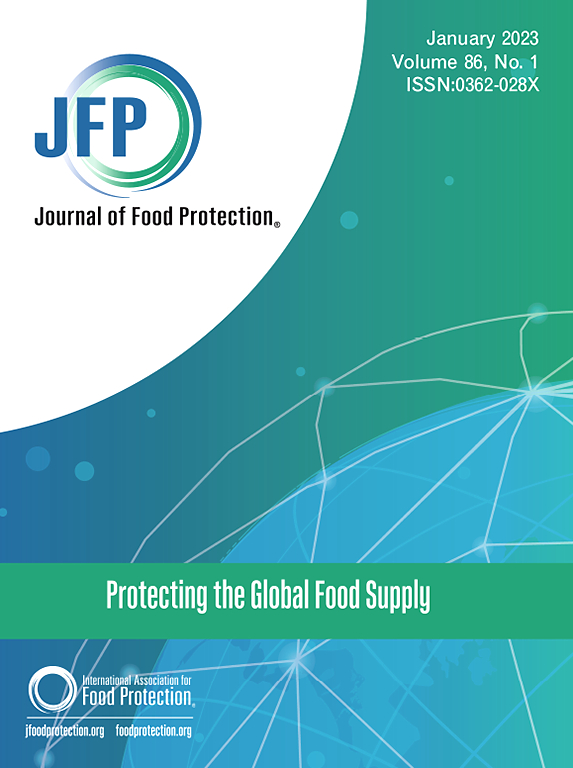Recommendations for the Development of Artificial Intelligence Applications for the Retail Level
IF 2.1
4区 农林科学
Q3 BIOTECHNOLOGY & APPLIED MICROBIOLOGY
引用次数: 0
Abstract
Some of the early applications of artificial intelligence (AI) for food safety appear to be intended for use at the level of manufacturing and distribution. Artificial intelligence applications to facilitate foodborne illness outbreak investigations, development of HACCP plans, and food safety root cause analyses at the retail level are needed. For example, the interview form in the International Association for Food Protection booklet, Procedures to Investigate Foodborne Illness, could be filled out by humans, but much of the rest of the forms could be completed by artificial intelligence applications. Humans would still have to do the environmental assessments. Most AI applications to date have consisted of pattern identification. Pattern recognition applications may not be capable of assisting in all the proposed retail applications, but it would not be helpful to propose these retail applications without offering a possible path forward. Progress in the proposed directions may require the development of more robust artificial intelligence based on cognitive models. Because this paradigm shift is less familiar to food safety professionals, a comparison between pattern recognition algorithms and cognitive models is offered. An explanation of cognitive models is included to raise awareness of this approach.
关于在零售业开发人工智能应用的建议。
人工智能(AI)在食品安全领域的一些早期应用似乎是为了在生产和分销层面使用。需要应用人工智能来促进食源性疾病爆发的调查、HACCP 计划的制定以及零售层面的食品安全根本原因分析。例如,国际食品保护协会小册子《食源性疾病调查程序》中的访谈表可以由人工填写,但其余大部分表格可以由人工智能应用软件完成。人类仍需进行环境评估。迄今为止,大多数人工智能应用都是模式识别。模式识别应用可能无法协助所有建议的零售应用,但如果不提供可能的前进方向,提出这些零售应用是无济于事的。要在建议的方向上取得进展,可能需要开发基于认知模型的更强大的人工智能。由于食品安全专业人员对这种模式转变不太熟悉,因此我们将对模式识别算法和认知模型进行比较。本文还对认知模型进行了解释,以提高人们对这种方法的认识。
本文章由计算机程序翻译,如有差异,请以英文原文为准。
求助全文
约1分钟内获得全文
求助全文
来源期刊

Journal of food protection
工程技术-生物工程与应用微生物
CiteScore
4.20
自引率
5.00%
发文量
296
审稿时长
2.5 months
期刊介绍:
The Journal of Food Protection® (JFP) is an international, monthly scientific journal in the English language published by the International Association for Food Protection (IAFP). JFP publishes research and review articles on all aspects of food protection and safety. Major emphases of JFP are placed on studies dealing with:
Tracking, detecting (including traditional, molecular, and real-time), inactivating, and controlling food-related hazards, including microorganisms (including antibiotic resistance), microbial (mycotoxins, seafood toxins) and non-microbial toxins (heavy metals, pesticides, veterinary drug residues, migrants from food packaging, and processing contaminants), allergens and pests (insects, rodents) in human food, pet food and animal feed throughout the food chain;
Microbiological food quality and traditional/novel methods to assay microbiological food quality;
Prevention of food-related hazards and food spoilage through food preservatives and thermal/non-thermal processes, including process validation;
Food fermentations and food-related probiotics;
Safe food handling practices during pre-harvest, harvest, post-harvest, distribution and consumption, including food safety education for retailers, foodservice, and consumers;
Risk assessments for food-related hazards;
Economic impact of food-related hazards, foodborne illness, food loss, food spoilage, and adulterated foods;
Food fraud, food authentication, food defense, and foodborne disease outbreak investigations.
 求助内容:
求助内容: 应助结果提醒方式:
应助结果提醒方式:


